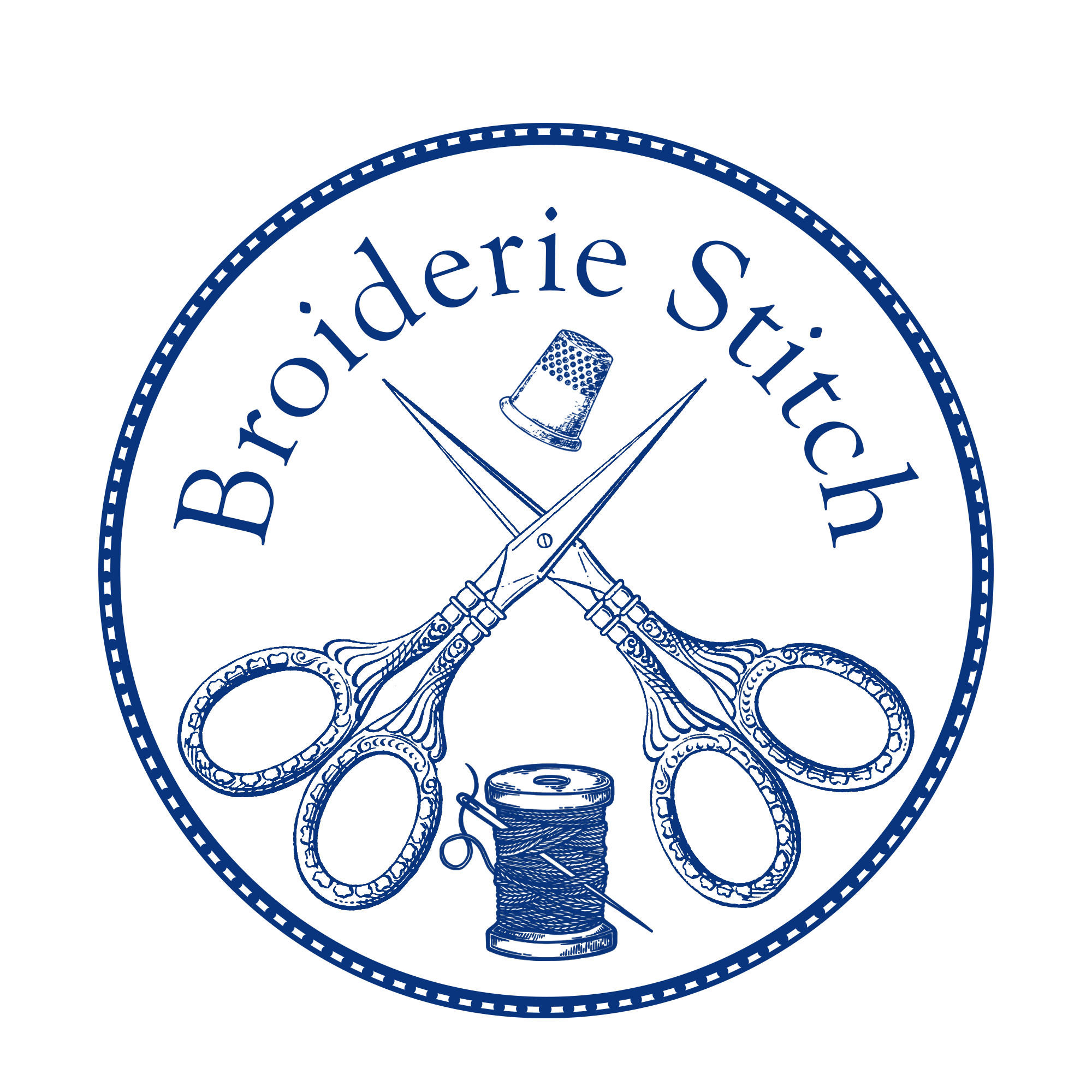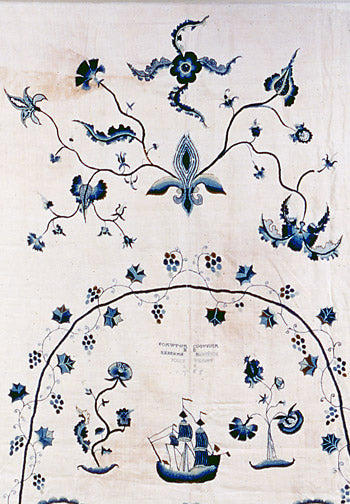The colonists faced hard wear in more ways than one in historic Deerfield – and the work they made had to stand up to such use as well. Since many of the threads were hand-spun and –dyed, they show more variation than machine-made threads, and being so expensive in hours of labor, were used very carefully for maximum impact and durability. If it was worth doing, it was worth doing right, and many of the pieces look nearly as good now as they did when they were stitched.

A notable feature of Deerfield work is its lack of satin stitch. Satin stitch is a very common stitch worldwide; it’s parallel stitches that go completely across an area, and when done well it is very smooth and appealing. It’s best suited for fairly small areas since larger stitches can get caught or pulled. Instead of this smooth but finicky stitch, early embroideresses used New England Laidwork instead. This stitch is made in two parts – first a long stitch goes across the shape, but on the return trip, instead of being on the back of the material a stitch is taken back over the first one at a slant. This ‘ties’ the long stitch down to the ground fabric and is much sturdier than satin stitch. The ‘tying’ stitch may be short or long, or there may be several tying stitches holding a thread down along its length if it is especially long.

From artedelricamo
New England laidwork is lovely for solid blocks of color, but those blocks take up a fair amount of thread. You can cover twice an area with that same thread if you don’t mind some background fabric peeking through, and you can do that quite prettily with trellis stitch.

From milleniadesigns.com
Trellis stitch is formed by very long stitches that cross a large space, usually in at least two directions. These threads may be the same color for both or different colors, according to preference. At each of the points where the threads cross, the intersection is tied down with a tiny stitch or two. Again, this can be the same color as the long stitches or a separate color, and can be horizontal, vertical, a tiny cross . . . the possibilities are endless.
Both of the above stitches are great ‘ground’ stitches ; they can fill an area of a design well and scale up fairly easily. Sometimes ‘line’ stitches are necessary, and a common line stitch in Deerfield work is herringbone stitch.

From Mollie Johanson
Though this stitch is used all over the world in a variety of ways, the amount of variations seen in the humble herringbone in Deerfield work are surprising. Like New England laid work and trellis stitch, it is often seen ‘tied’ – small stitches over the crossing points not only add support but change the look of the stitch in dozens of ways. Pulling the crossing points way out to the edges, using long vertical stitches or short horizontal ones – these tying stitches add a whole new dimension and richness to a simple border.
Work is proceeding apace on the Deerfield butterfly – but there’s not much to show you yet. The nature of all these tied stitches means that they tend to work very slowly, and there’s a lot of detail to work! The body is mostly complete, and soon I’ll be moving on to the wings. It’s been a bit on the back burner due to other projects, but after several large finishes (more on those later!) there’s a bit more time for our native butterfly.

